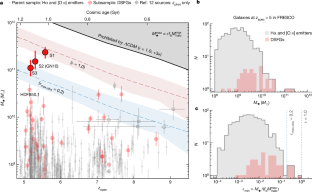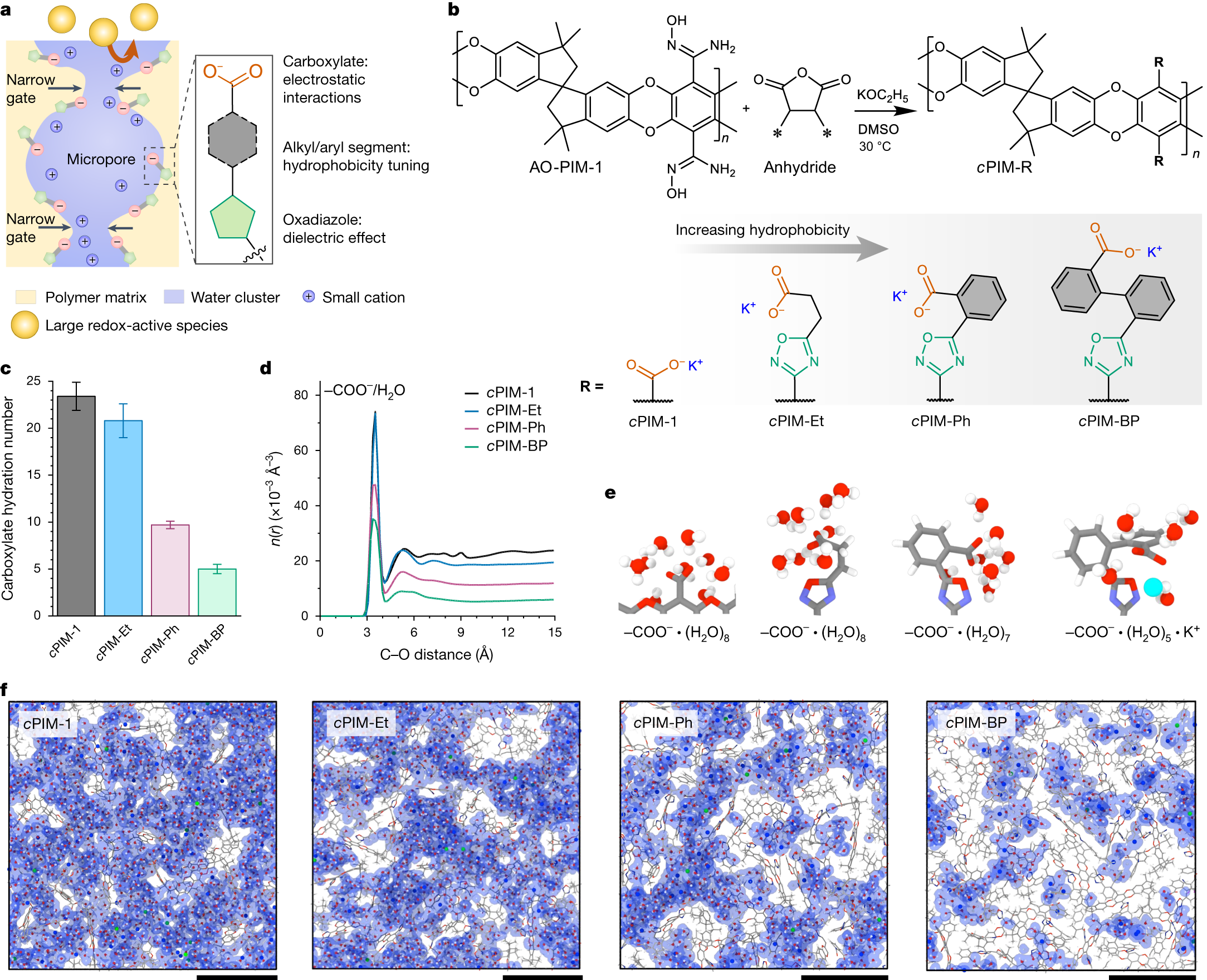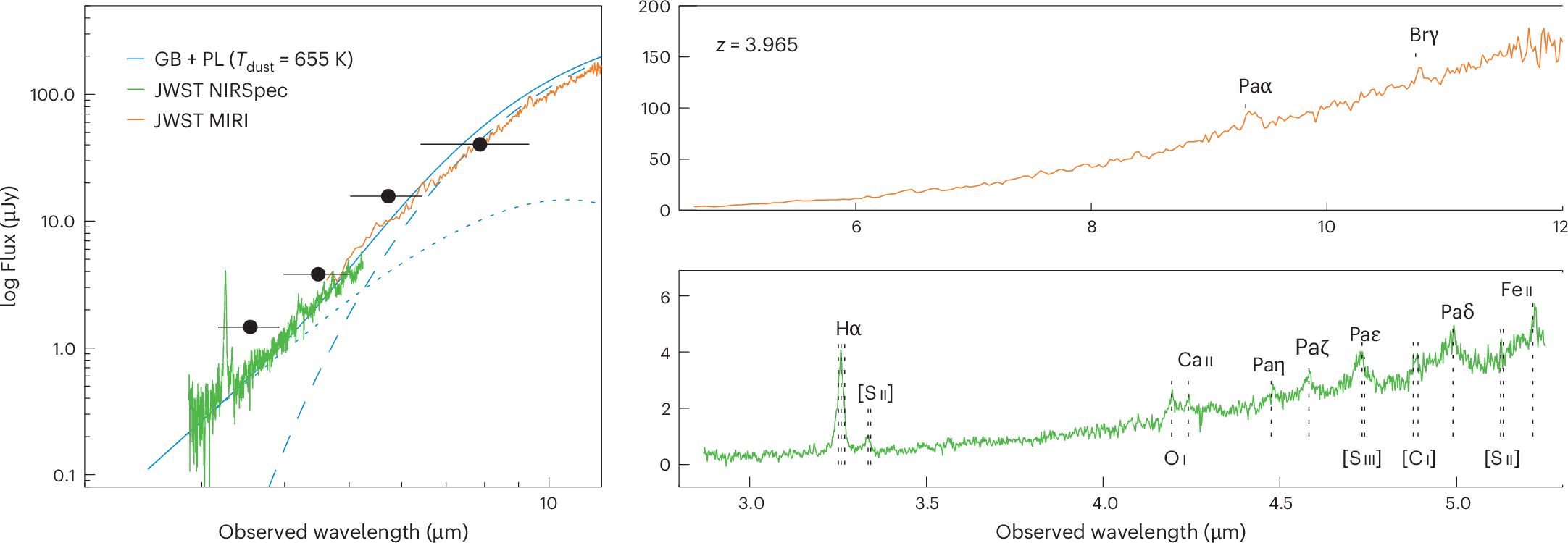2024-11-13 バース大学
<関連情報>
- https://www.bath.ac.uk/announcements/astronomers-discover-mysterious-red-monster-galaxies-in-the-early-universe/
- https://www.nature.com/articles/s41586-024-08094-5
超大質量銀河の最初の10億年間における加速度的形成 Accelerated formation of ultra-massive galaxies in the first billion years
Mengyuan Xiao,Pascal A. Oesch,David Elbaz,Longji Bing,Erica J. Nelson,Andrea Weibel,Garth D. Illingworth,Pieter van Dokkum,Rohan P. Naidu,Emanuele Daddi,Rychard J. Bouwens,Jorryt Matthee,Stijn Wuyts,John Chisholm,Gabriel Brammer,Mark Dickinson,Benjamin Magnelli,Lucas Leroy,Daniel Schaerer,Thomas Herard-Demanche,Seunghwan Lim,Laia Barrufet,Ryan Endsley,Yoshinobu Fudamoto,… J. Stuart B. Wyithe
Nature Published:13 November 2024
DOI:https://doi.org/10.1038/s41586-024-08094-5

Abstract
Recent James Webb Space Telescope (JWST) observations have revealed an unexpected abundance of massive-galaxy candidates in the early Universe, extending further in redshift and to lower luminosity than what had previously been found by submillimetre surveys1,2,3,4,5,6. These JWST candidates have been interpreted as challenging the Λ cold dark-matter cosmology (where Λ is the cosmological constant)7,8,9, but, so far, these studies have mostly relied on only rest-frame ultraviolet data and have lacked spectroscopic confirmation of their redshifts10,11,12,13,14,15,16. Here we report a systematic study of 36 massive dust-obscured galaxies with spectroscopic redshifts between 5 and 9 from the JWST FRESCO survey. We find no tension with the Λ cold dark-matter model in our sample. However, three ultra-massive galaxies (logM★/M⊙ ≳ 11.0, where M★ is the stellar mass and M⊙ is the mass of the Sun) require an exceptional fraction of 50 per cent of baryons converted into stars—two to three times higher than the most efficient galaxies at later epochs. The contribution from an active galactic nucleus is unlikely because of their extended emission. Ultra-massive galaxies account for as much as 17 per cent of the total cosmic star-formation-rate density17 at redshifts between about five and six.



